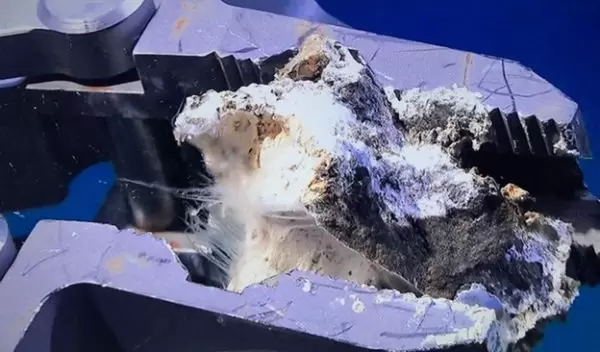
Bacteria release more carbon from the ocean than previously thought
A team led by University of Minnesota researchers has discovered that deep-sea bacteria dissolve carbon-containing rocks, releasing excess carbon into the ocean and atmosphere. The findings will allow scientists to better estimate the amount of carbon dioxide in Earth's atmosphere, a main driver of climate change.
The U.S. National Science Foundation-funded study is published in The ISME Journal: Multidisciplinary Journal of Microbial Ecology.
"If CO2 is being released into the ocean, it's also being released into the atmosphere, because they're constantly interchanging gases," said Dalton Leprich of UMN, the first author of the paper. "It's a flux of CO2 into the atmosphere that we didn't know about. These numbers should help us home in on a global carbon budget."
The researchers began studying sulfur-oxidizing bacteria -- a group of microbes that use sulfur as an energy source -- in methane seeps on the ocean floor. Akin to deep-sea coral reefs, these seeps contain limestone that traps large amounts of carbon. The sulfur-oxidizing microbes live on top of the limestone rocks.
After noticing patterns of corrosion and holes in the limestone, the researchers found that in the process of oxidizing sulfur, the bacteria create an acidic reaction that dissolves the rocks and releases the carbon that was trapped inside the limestone.
"You can think of it like getting cavities on your teeth," Leprich said. "Your tooth is a mineral. There are bacteria that live on your teeth, and your dentist will tell you that sugars are bad for your teeth. Microbes are taking those sugars and fermenting them, and that fermentation process is creating acid, and that will dissolve away at your teeth. It's a similar process to what's happening with these rocks."
The researchers plan to test this effect on different mineral types. The findings could help scientists use dissolution features such as holes and crevices as evidence that rocks have been dissolved by bacteria and to discover evidence of life on other planets, such as Mars.
"These findings are but one of the many examples of the important and understudied role microbes play in mediating the cycling of elements on our planet," said UMN’s Jake Bailey.
Added Matt Kane, a program director in NSF's Division of Environmental Biology, "This study helps improve estimates of CO2 in the atmosphere contributing to global warming, and explains the mechanism for it."


